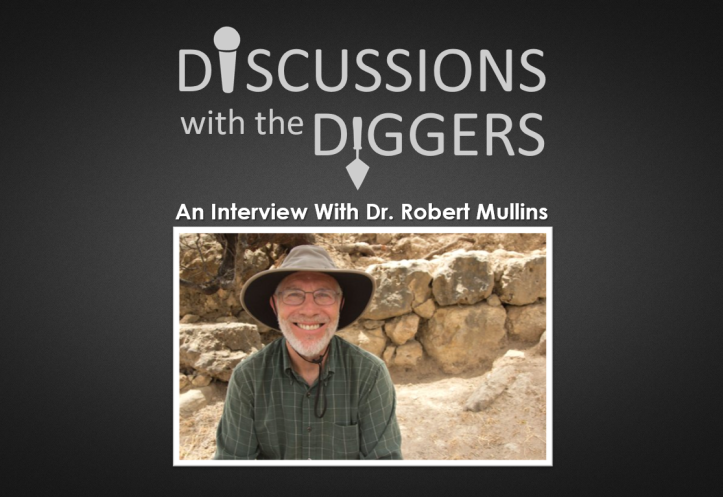
In Discussions with the Diggers, I have the privilege of interviewing archaeologists to learn more about their work and how the excavations they’ve been a part of illuminate Scripture. I recently reached out to Dr. Robert Mullins, who is the co-director of the excavations at Abel Beth Maacah.

Dr. Mullins is a professor at Azusa Pacific, which co-sponsors the Abel Beth Maacah dig, and is the Chair of the Department of Biblical and Religious Studies. He has had numerous publications over the years in various journals, as well as contributed to the Anchor Bible Dictionary and Encyclopedia Judaica. Most recently he coauthored the Atlas of the Biblical World (Fortress Press) with Mark V. Hoffmann.
BIBLE ARCHAEOLOGY REPORT: Welcome Dr. Mullins! How did you get into the field of archaeology?
DR. ROBERT MULLINS: I always had a love for the Bible growing up in Sunday School and an interest in the history of Egypt and Mesopotamia. After finishing high school in 1972, my mom saw an advertisement in Christianity Today where I could do a study tour of Israel with the Institute of Holy Land Studies (today, Jerusalem University College) followed by a dig at Tell Qasile under the direction of Amihai Mazar who was then in the process of writing his Ph.D. dissertation on the excavations at Tell Qasile. It was my first dig. I was placed in a square with John Currid (currently teaching archaeology at Reformed Theological Seminary). We were the ones to discover the first sign of the now-famous Philistine temple at Tel Qasile when we came across the pillar base that stood in the main hall. Ami’s first words when we pointed it out to him was, “You have just discovered the Philistine temple!” The next day, we were visited by Trude Dothan, Yigael Yadin, and Yohanan Aharoni as Ami pointed out the pillar base to them.
BIBLE ARCHAEOLOGY REPORT: What digs have you been a part of over the course of your career?
DR. ROBERT MULLINS: I have dug at Tell Qasile, Lachish, Jerusalem, Tel Dor, Masada, Beth-Shean, Tel Rehov, and Gezer in Israel and Tell Atchana (Alalakh) and Zincirli Hoyuk (Samal) in Turkey. I currently co-direct the archaeological excavations at Abel Beth Maacah with my two colleagues at my alma mater, the Hebrew University of Jerusalem where I completed my Ph.D. under Ami Mazar, the very same archaeologist I first dug with at Tell Qasile in 1972. While a student at the Hebrew University, I excavated with Ami at Beth-Shean where I supervised Area R (Level IX of the old University of Pennsylvania excavations directed by Alan Rowe). This area also became the basis of my doctoral dissertation. I also dug with him at Tel Rehov. My two co-directors were students with me back in the day. I dug with Nava Panitz-Cohen at Tel Dor, Beth-Shean, and Tel Rehov. I dug with Naama Yahalom-Mack at Tel Rehov. We have known each other quite well for many years and so forming a 3-member director team like this seemed natural. We continue Ami Mazar’s excavation methodology and ethos at our dig.
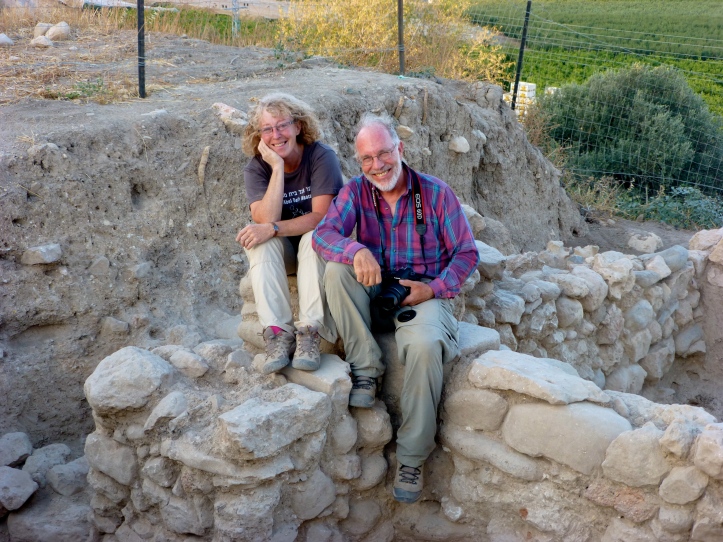
BIBLE ARCHAEOLOGY REPORT: Can you give us a brief overview of the importance of Abel Beth Maacah in the history of Israel?
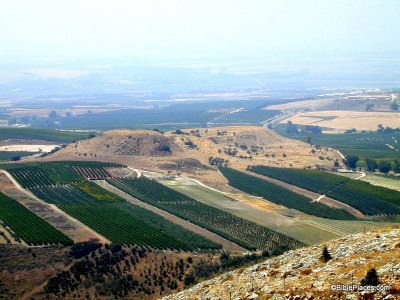
DR. ROBERT MULLINS: Abel Beth Maacah is specifically mentioned three times in the Bible. The first time in the context of the Sheba and the Wise Woman of Abel Beth Maacah in 2 Samuel 20:14-22. The second time when Ben-hadad was invited by Asa of Judah to invade Israel from the north in 1 Kings 15:20, and Tiglath-pileser’s invasion of the northern kingdom in 733/32 in 2 Kings 15:29. The site might be alluded to in Joshua 13:13 as simply “Maacah” who together with “Geshur” were counted among the people who the Israelites did not drive out and continue to live among the Israelites to this day. 2 Samuel 10:8 also mentions “Maacah” as mercenaries for the Ammonites against David. While we cannot prove that “Maacah” is the same as “Abel Beth Maacah” most scholars believe that they are the same.
BIBLE ARCHAEOLOGY REPORT: You’ve excavated at Abel Beth Maacah since 2012. Can you share some of the significant finds you made there?

DR. ROBERT MULLINS: The mound is 25 acres in size. We have a significant fortified Middle Bronze Age and Late Bronze Age city (1750-1200 BC) that covered the entire mound. We can add now Abel Beth Maacah to the list of a dozen or so cities that were fortified in the southern Levant during the Late Bronze Age. Based on Egyptian texts of the second millennium, the city was known at that time as “Abel”. The city came to an end at the end of the Late Bronze Age but so far we have no clear signs of destruction. One significant find from the Late Bronze city was a small jug containing a silver hoard. The city simply ended. At the beginning of Iron Age I around 1200 or perhaps as late as 1150 BC, the city was resettled only in one part of the mound as far as we can tell to date. This area is on the east side of the lower mound where the lower city abuts the upper city (our Area A). We think this is when “Beth Maacah” (referring to a tribal group that
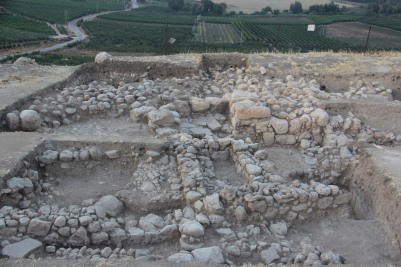
resettled the site) was attached to the older name Abel becoming what can be rendered “Abel of Beth Maacah” (Abel of the House of Maacah referring to the clan or tribal group that settled the site). We have no idea about the ethnicity of this group. They may have been Canaanite. Some suggest they were Aramean. But we don’t know. This small village would have been typical of Galilean villages in Iron Age I, a period of ruralization throughout the Levant that followed the collapse of the Late Bronze Age city-state system and before the rise and establishment of tribal kingdoms and polities in the 10th century BC. In other words, Abel Beth Maacah of 1200-1100 or so BC would not have been much different than what we read in the Bible about Gideon’s village from the same era. This village is only known in our Area A and so far nowhere else. However, beginning in 1100/1050 and continuing into the 10th-century (we don’t have enough

radiocarbon dates to say for sure yet, but perhaps until 970 or 950 BC), Abel Beth Maacah expands considerably from the small village that preceded it to cover large parts of the lower and upper mounds. We call this span of time the “late 11th-early 10th century BC”. It appears at this time to have been the largest and most significant site in the northern Huleh Valley. It is best represented in Area A at the northern end of the lower mound on the eastern side. The pottery and material culture is typical to upper Galilee in Iron Age I and is pretty much identical to what one finds at Tel Dan (4.5 miles east of us). So far, we have no way to tell who occupied the site. Canaanites? Arameans? Israelites? Phoenician? There is nothing in the material culture that helps us. The only pottery that we can connect with an ethnic group is Phoenician, but is this pottery at our site through trade or settlement? We don’t know.

Significant finds from the late 11th – early 10th century is a large administrative-industrial complex with a small religious shrine that has produced a very unique clay installation with two sinks in it. There are no parallels to it at this point. This city, which would fit in the time span of Samuel, Saul, David, and perhaps Solomon, is destroyed and replaced by a late 10th – 9th-century city when again the city covers both the upper and lower mounds. Here, too, the best representation is in Area A where we found an Iron IIA jug (late 10th – 9th century) containing more than 400 animal astragali (knuckle-bones) used most probably for divination. While 100 years later than the Wise Woman, who would have been associated with the late 11th-early 10th-century city, the knucklebones might point to a tradition of divination hinted at in 2 Samuel 20 about people coming to Abel to inquire”. Again, there is nothing in the material culture that can helps us identify the ethnicity of the people who lived here.
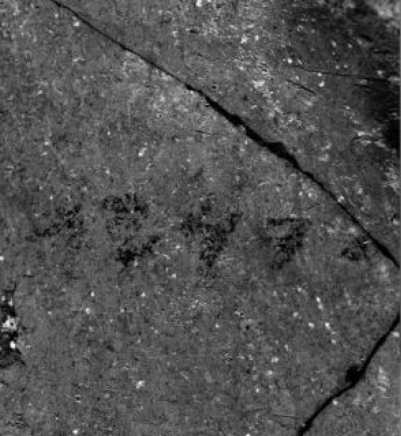
Also dating to this same general period, but from a phase that is most certainly late in the 9th century in Area K, we found an inscription on a storage jar mentioning the personal name “Benyo” or “Benayo”. This is the northern Israelite form of the biblical name “Benaiah” (having the Israelite theophoric ending -yo rather than the Judahite theophoric -yah). However, does a single Israelite name make Abel Beth Maacah of the 9th century an Israelite site? We don’t know. Maybe given the city’s border location it was an ethnically mixed city. We will need more information before we can say much for sure. But without question, there was a worshipper of Yahweh by the name of Benyo who lived at our site. Also from the 9th century in the upper city (Area B) we have the poorly preserved remains of a citadel. In this building, we found a faience head of a bearded man wearing a headband. The quality of the figurine head which had been broken off tells us that he was an elite, perhaps representing a governor, general, or even a king. But we can’t say more than this since the artistic style is typical of people from the Levant and not a particular ethnic group.

BIBLE ARCHAEOLOGY REPORT: What is the future of the excavations at Abel Beth Maacah? What are your goals?
DR. ROBERT MULLINS: We want to better understand the extent and the population makeup of Abel Beth Maacah in the Iron Age. This is our main interest since the Iron Age is not well understood in this border region between Israel, Phoenicia, and Aram. Area A is our richest area and we will continue expanding here. Area K where the inscription was found will be another focus since we might find more jars with names on them. This could give us better clues to the population makeup in the 9th century BC. Meanwhile, we tend to think along with indications in the biblical text that this region tended to be controlled by various political powers at different times. The big mystery is the 8th century. 2 Kings 15:29 says Abel Beth Maacah was destroyed by the Assyrians, but so far, we have very little evidence for 8th-century occupation. Occasional 8th-century sherds show up in buckets in the upper city but very few and no architecture at all. We would like to solve this problem. One possibility is that the current Israeli army bunkers on the summit cover an Iron Age citadel or fortress. This would make sense to me. What T-P III would have destroyed is not a city but an army outpost. Nothing in 2 Kings insists that it must be a city as only the name is given. But we’ll have to figure out a way to get to these remains if they exist because the Israeli army created a thick capping of debris at least 3 meters deep on the summit.
I’d like to thank Dr. Mullins for taking the time to answer my questions. There are exciting discoveries being made at Abel Beth Maacah, and I encourage my readers to follow the latest findings at the official website of the excavations: http://www.abel-beth-maacah.org/
Here are a few articles coathured by Dr. Mullins related to the excavations at Abel Beth Maacah for further study:
- A Silver Lining at Abel Beth Maacah
-
Sealed with a Dance: An Iron Age IIA Seal from Tel Abel Beth Maacah
Disclaimer: I allow each archaeologist to answer in his or her own words and may or may not agree with his or her interpretation of their work.
Title Photo: Azusa Pacific Public Relations Department

Nice! Good article. I dug with Bob in 2014 at ABM. J
>